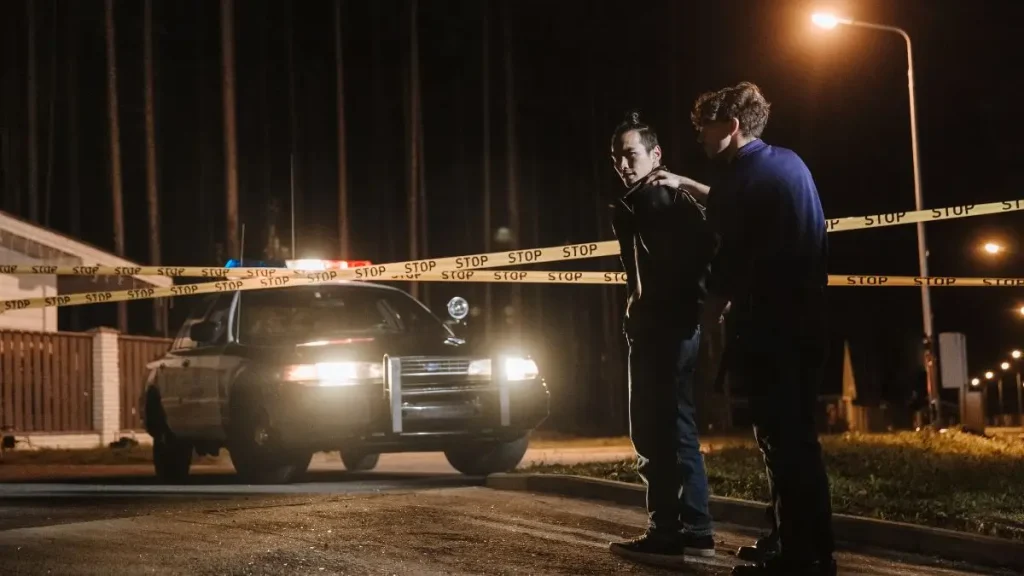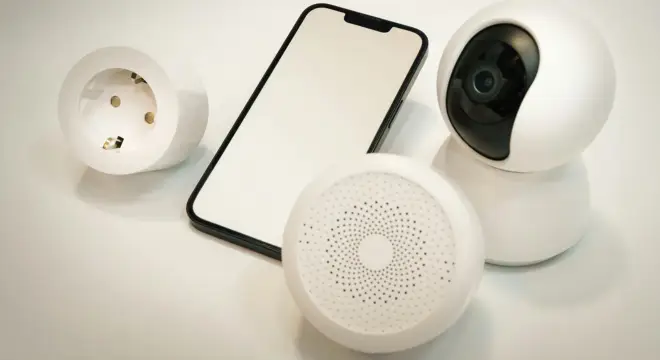Three Arrested for Posing as Amazon Drivers to Force Way into Home in Florida
I’ve read enough crime stories to think I’m numb to them. But this one hit different.
Three men dressed like Amazon delivery drivers—down to the vests and fake packages—knocked on a family’s front door in North Port, Florida. Inside was a teenage girl, alone with her mom. It was early afternoon, May 23. What happened next wasn’t just a robbery. It was calculated. Armed. Personal.
These men weren’t strangers to the family. That’s what makes it even more disturbing.
They forced their way in, held the mother and daughter hostage for hours, and ransacked the house. All while waiting for the father to return home—like something out of a scripted home invasion scene. But this was real. In broad daylight. In a quiet neighborhood.
I’m walking you through the full story—not just what happened, but why it matters. Because this wasn’t random. And more importantly, it could’ve happened to anyone who opens the door without thinking.
Let’s break it down step by step—what they did, how they were caught, and how you can spot the warning signs next time someone rings your doorbell in uniform.
Have you ever second-guessed opening the door to a delivery person? Let me know in the comments—we need to talk about this more.
The Crime Timeline: From Amazon Disguise to Armed Getaway
Let me walk you through exactly how this unfolded—because the details matter.
It started around 1:30 p.m. on May 23. A young girl was home in North Port with her mom when she heard a knock at the door. Outside stood three men wearing Amazon vests, carrying what looked like a package.
According to WFLA, that delivery disguise worked. The girl opened the door—and that’s when everything went wrong.
The men pushed their way in. They were armed. They didn’t waste a second. They held the girl and her mother inside while they tore through the house, looking for valuables and cash.
But what chills me the most? They waited. Not to leave. But to trap the father when he came home. Around 5 p.m., he showed up, noticed the front door was locked, and tried going in through the back. That’s when one of the suspects confronted him. There was a short struggle before the men finally ran.
One of them later stole a parked Ford F-150—keys left inside—and drove off. That truck was found days later in a shopping center.
All of this happened in the middle of the day. No masks. No rush. Just confidence that they’d get away with it.
The Arrested Men: Who Are Robert Germain, Anton Brown, and Adlet Francis?

Now here’s the part that makes this more than just another home invasion. The suspects weren’t strangers. This was targeted.
According to ABC News, police believe at least one of the suspects knew someone inside the home. This wasn’t a random hit. That makes the whole thing feel way more personal—and far more dangerous.
The three men arrested were:
- Robert St. Germain, picked up in Indian River County
- Anton Bradley Brown, held in Broward County
- Adlet Javon Francis, who was actually arrested weeks earlier on unrelated charges in Orange County
Their plan wasn’t sloppy. They had uniforms. They picked a specific time. They knew who would be home—and who wouldn’t.
If anything, that shows how home invasions today don’t look like what we imagine. They’re calculated. Familiar. And terrifying.
It’s the kind of crime that makes you rethink everything—your routines, your neighbors, even your front door. What would you have done in this situation? Drop your thoughts in the comments—these conversations matter.
Targeted Crime, Not Random: Connection Between Victim and Suspects
I don’t know about you, but the idea that someone you know—or someone connected to you—could plan this kind of thing? That’s scarier than any break-in by a stranger.
Police made it clear this wasn’t a random act of violence. The suspects knew who lived there. They planned this with intent. Which means this wasn’t just about money—it was personal.
This changes how we think about home security, right? It’s not just about locks or cameras anymore. It’s about the people around you, the ones who know your routines, your schedule, even who’s home and when.
We often think danger comes from outside. But sometimes, it walks right through your front door wearing a name tag and a smile.
Stories like this are sparking serious conversations in several home safety communities I follow—especially around trusting people who know our daily patterns. I saw some intense debates recently on WhatsApp where folks were sharing eerily similar experiences and warning signs they missed. It’s worth staying in the loop.
How Detectives Solved the Case and Tracked the Getaway?
What I appreciate most in cases like this is when police don’t let things slip.
After the suspects fled, North Port Police brought in their crime scene team. They combed through everything—the home, the area around it—and found items they believe were left behind by the suspects. That kind of detail work matters.
Investigators connected the dots. They didn’t just stop at fingerprints—they followed trails across counties. Francis was the first to be arrested on July 12, and the other two—Germain and Brown—were picked up days later.
It wasn’t instant, but it was thorough. The fact that all three are now behind bars? That’s what gives families like this some peace.
But justice doesn’t erase what happened. It just makes sure it doesn’t go unpunished.
It reminds me of the quick police response when Ketel Marte’s Scottsdale home was burglarized during the All-Star Game. In both cases, attention to detail and fast coordination made a huge difference.
Full List of Charges Filed Against the Three Men
If you’re wondering what kind of charges come from a case like this—it’s a lot. And rightfully so.
Here’s what they’re facing:
- Conspiracy to commit home invasion
- Home invasion while armed
- Robbery
- Kidnapping
- Use of a two-way communication device to commit a felony
- Grand theft auto (specific to Brown, for stealing the F-150)
That’s not just a laundry list. These are serious felonies, and they carry real weight. It’s not just about sending a message—it’s about protecting the next family who might’ve been on their list.
If there’s one thing I take from this, it’s that even when people go to great lengths to fake trust—justice still shows up eventually.
Delivery Disguises Used in Crimes: A Growing National Concern

Let’s be honest—you and I have both opened the door for a delivery we weren’t expecting. Sometimes it’s an early package. Sometimes it’s nothing.
But what if it’s someone pretending?
This Florida case isn’t isolated. In Connecticut, a man impersonated an Amazon driver and was sentenced to 10 years after a violent home invasion. The FBI has even warned that organized crime groups have used delivery disguises as entry tools in targeted attacks.
And it’s getting worse. Post-pandemic, with the explosion in doorstep deliveries, criminals are blending into something we all trust—Amazon, FedEx, DoorDash.
That means the very thing that makes us feel secure—seeing a uniform, a branded package—is now being used against us.
This isn’t about paranoia. It’s about awareness.
Sadly, this isn’t the first time we’ve seen crimes rooted in personal connections. There was another disturbing case where family members were behind a home invasion in Iowa—proof that danger sometimes wears a familiar face.
Home Safety Tips: How to Spot a Fake Delivery Driver
If this story rattled you, you’re not alone. But here’s the good news—you can make your home safer starting today.
Here’s what I do now, and what you should too:
- Don’t open the door unless you’re expecting a delivery. Simple, but powerful.
- Check the tracking number through your official app. If there’s no delivery scheduled, wait.
- Ask for ID or delivery verification. Real drivers won’t get offended.
- Install a video doorbell or camera. I use mine daily—not just for footage, but as a deterrent.
- Set a family “safe word.” Especially if you have kids or elders at home—this can help during emergencies.
I’m not trying to scare you—I’m trying to prepare you. Because as we’ve seen, criminals don’t come dressed like criminals anymore.
In more extreme cases, self-defense has turned deadly—like when a 14-year-old teen in Los Angeles was shot by a homeowner during a break-in attempt. It’s a harsh reminder of what can happen when fear meets uncertainty.
Will Insurance or Amazon Compensate Victims of Impersonation Crimes?
This is the part almost nobody talks about—but you probably thought about it: Does home insurance cover this kind of thing? Can the victims recover what was stolen?
In many cases, yes—but it depends on the policy. Most homeowner’s insurance will cover theft and property damage, but you must prove forced entry and provide a police report. And if cash was stolen, coverage limits can be low.
What about Amazon? Here’s the kicker—they’re not liable. If someone pretends to be a driver, Amazon’s legal position is that it’s not their employee, not their problem. Unless the attacker was a verified Amazon Flex driver (which these suspects were not), there’s no compensation.
I always recommend you review your insurance documents now—not after something bad happens. And ask your provider about impersonation-specific scenarios. You’ll be surprised what’s excluded.
If you’re interested in more real stories that go beyond headlines—about break-ins, home defense, and how people are reacting across the country—visit our Home Security section here. It’s packed with updates and tips that actually matter.
Disclaimer: This article is based on publicly available reports and law enforcement statements as of the publication date. The suspects are presumed innocent until proven guilty in a court of law. Details may evolve as the investigation continues.


